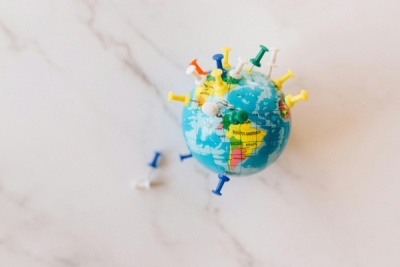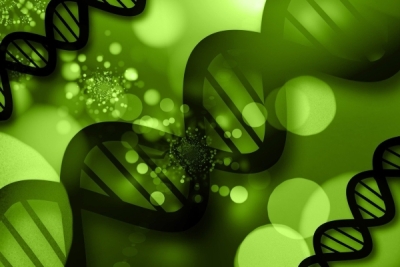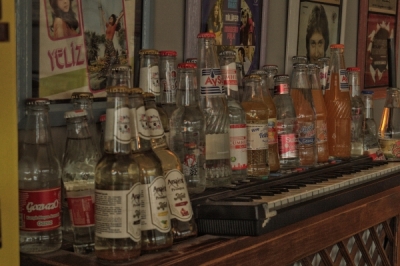The abusive consumption of alcohol among indigenous peoples has become an increasingly frequent and worrying phenomenon, happening not only with Brazilians, but also among native peoples of the United States, Canada and Australia.
In Brazil, there is little research on the subject and little is known about the reality of alcohol consumption by this population, but, despite little conclusive scientific evidence, some researchers say that indigenous people may have some genetic predisposition factor that increases the risk for alcohol dependence (1).
In what context do indigenous people drink?
Alcohol consumption rates among indigenous people vary and there is no single cause for abuse, which can occur according to the specific sociocultural contexts of each ethnic group.
It is known that the manufacture and use of fermented beverages and psychoactive substances originated from the human need to ritualize social life, observed in practically all cultures. Traditionally, the alcoholic beverages consumed by the indigenous people were produced by them in a fermentation process of yeasts or bacteria from corn, sweet potatoes, cassava or some fruits, depending on the ethnic group (2).
In general, the use of these substances is linked to the sacred sphere and the cosmology of each ethnic group. In the past, some communities prepared and consumed drinks, such as caiçuma, chicha and others, with the aim of facilitating sociability, marriage negotiations and alliances between communities. Its use was for events such as the celebration of a new leader, alliances or friendly relations with other indigenous groups, birthdays and weddings (2).
Among the Amazonian peoples, for example, fermented beverages are linked to the sacred, to fun, to reciprocity and even to politics. The Kaingang, an indigenous population from the south of Brazil, traditionally have a kiki party, a drink made from fermented honey. On this occasion, they use the drink as a symbolic affirmation of ethnic identity and social organization, marking the reciprocal meals between the living and the dead and the relationships between the two halves that make up Kaingang society. Over time, however, cachaça was incorporated into the ritual and added to the drink made from honey, which started to give the event the impression of being a great binge, known locally as “the Indians' party” (2).
Alcohol consumption today
Despite having learned to consume alcohol following the values and rituals expressed by their group, many indigenous peoples saw their drinking style change and lose the link with their culture. Thus, the use of traditional fermented beverages marked by sociocultural limits ceased to occur in most South American indigenous communities. Many began to drink other substances at their traditional festivals, as well as in new contexts. This new form of consumption is the result of changes that have occurred within communities, such as interethnic contact, increased circulation of beverages in the region of villages and the advent of industrialized beverages.
A study carried out with 230 indigenous people from 12 Karipuna villages in Oiapoque, Amapá, showed that the prevalence of alcohol abuse was 24.8% from one to three times a year; 20.4% four to six times; 12.2% from seven to ten times and 9.6% from more than ten times a year (1). 70% of respondents in the survey said they use alcoholic beverages, with beer being the most consumed beverage (51.6%). In addition, alcohol consumption has been happening at an increasingly early age, and there are even records of children who are already using the substance: the survey showed that 90.1% of the sample started drinking between the ages of nine and twenty.
In this research, most of the indigenous people interviewed had their first contact with alcoholic beverages other than traditional ones in the village itself (70.8%), with the highest consumption being at home. The purchase of beverages, however, tends to occur mainly in markets (59%) due to easy access.
Although 59% of the indigenous people in the sample stated that drinking never caused them a problem, 85.7% consider that consumption is a problem in the community, mainly with regard to changes in behavior (70.6%).
The growing harmful consumption of alcoholic beverages by indigenous people, associated with new eating habits and a more sedentary lifestyle, which now also includes tobacco use, has resulted in highly negative consequences for communities and their health, such as general violence and violence inside the families, malnutrition, damage to children's health, including cases of fetal alcohol syndrome, among others. In addition, the communities' external relations have also been impacted, leading to public and judicial problems, construction of a negative image and questioning regarding their rights and social programs aimed at this population group.
Another fundamental aspect concerns the precarious living and health conditions in several indigenous lands, characterized by high prevalence of nutritional deficiencies, infectious and parasitic diseases, as well as non-transmissible chronic diseases (3). In the report of the on-site visit of the Inter-American Commission on Human Rights (4) to Brazil, in 2018, the persistence of a scenario of social inequality and structural and systemic discrimination against indigenous peoples and other minority social groups (5) was verified. All these factors place the indigenous population in a vulnerable situation and may contribute to alcohol abuse.
How to prevent harmful alcohol consumption among indigenous peoples?
As each ethnic group, in addition to its cultural specificity, also has political, historical and economic differences, it is necessary to look for solutions that reflect such diversity in order to prevent the harmful consumption of alcohol and its consequences.
In this sense, it is necessary to build prevention programs in partnership with these groups in order to identify the collective and specific factors that contribute to the excessive consumption of alcoholic beverages. Working with the communities involved, seeking to understand the meaning of alcohol in their traditions and the changes currently seen, is also a way of identifying causes and possible responses to the specific problems that arise in the villages. It is also necessary to eliminate prejudices and stigmas, such as that alcoholism, as well as other negative stereotypes, are part of the identity of native peoples.
In other words, possible solutions for preventing the problem must consider the problem of harmful use and dependence on alcohol in the light of the particularities of these peoples in order to build quality of life and well-being without neglecting their traditions.











